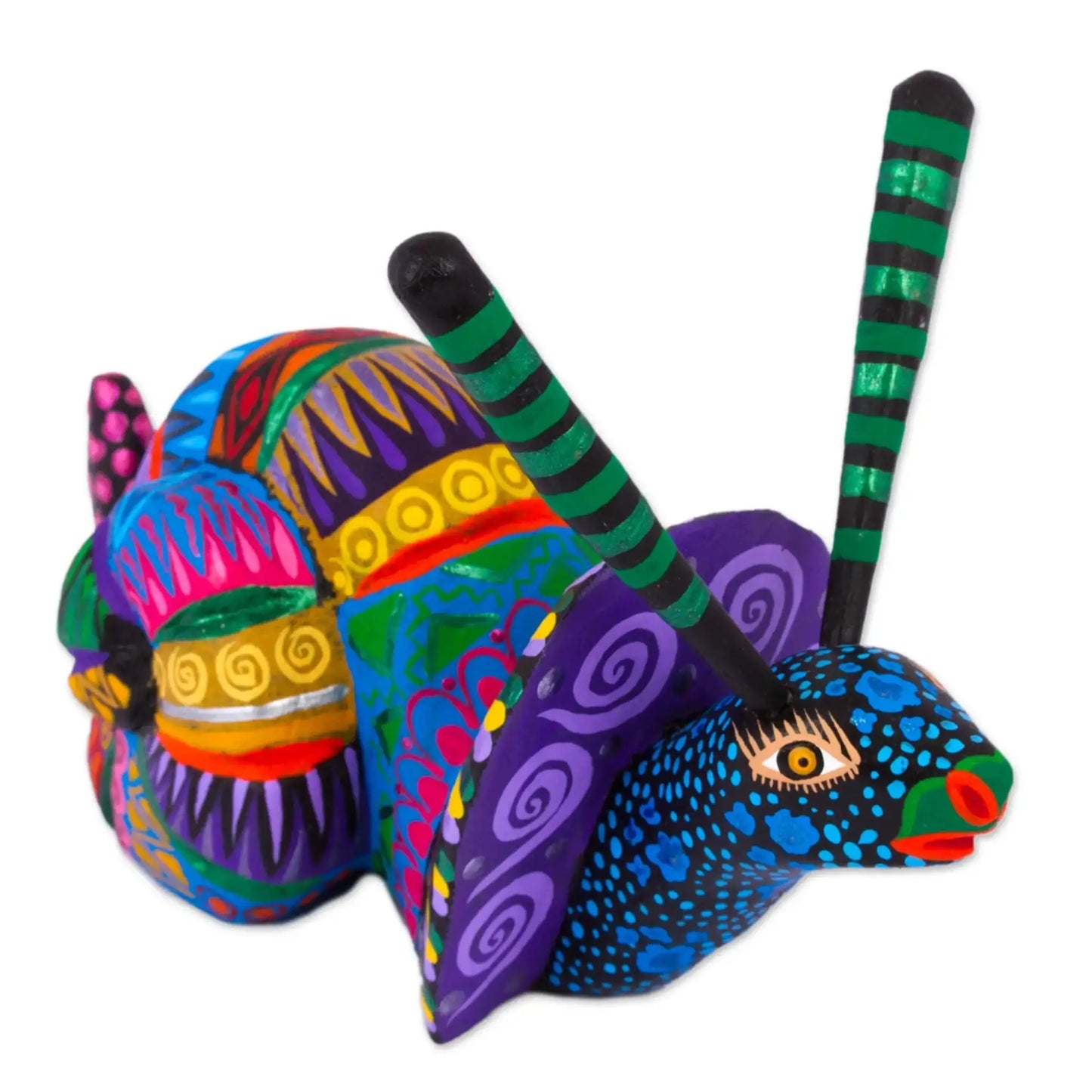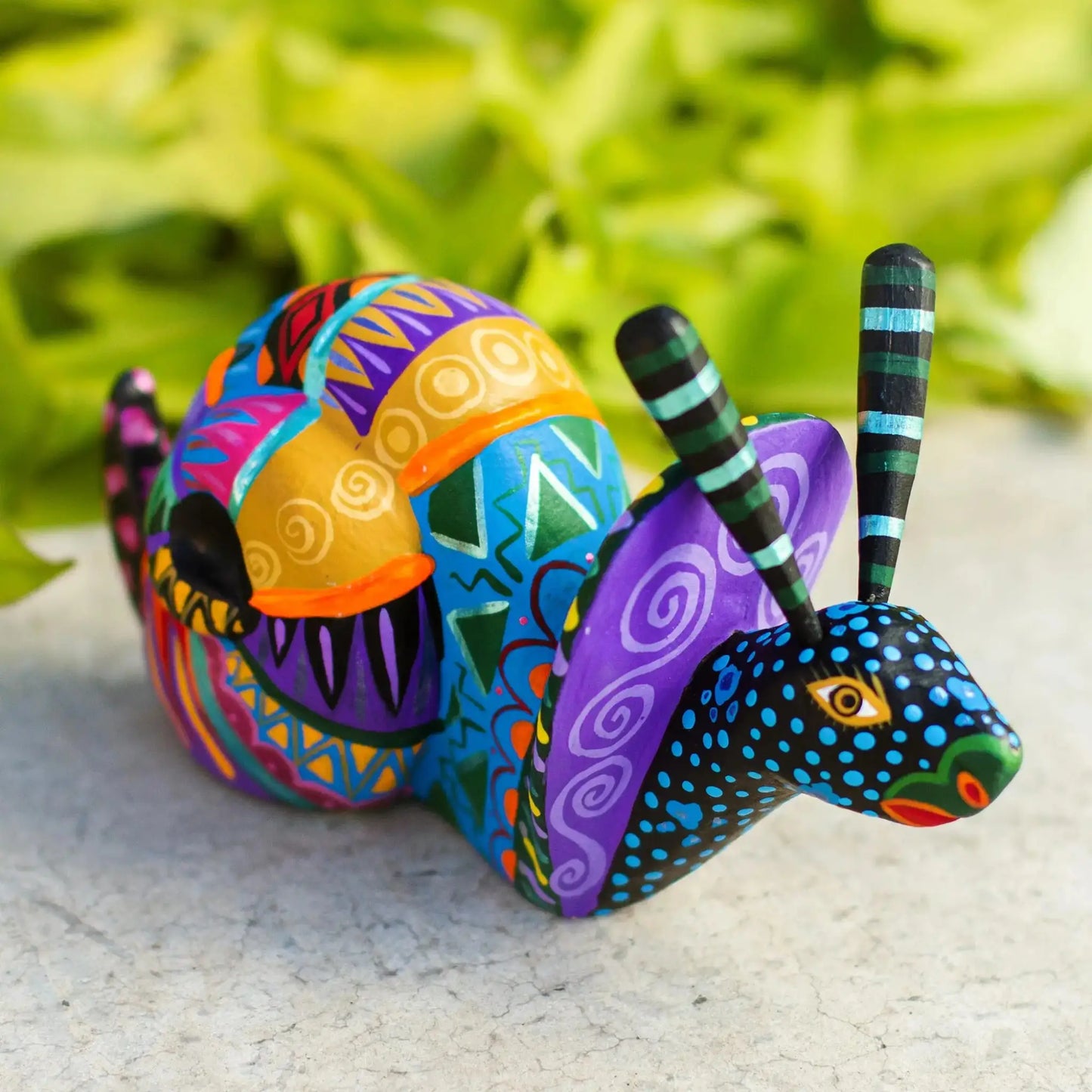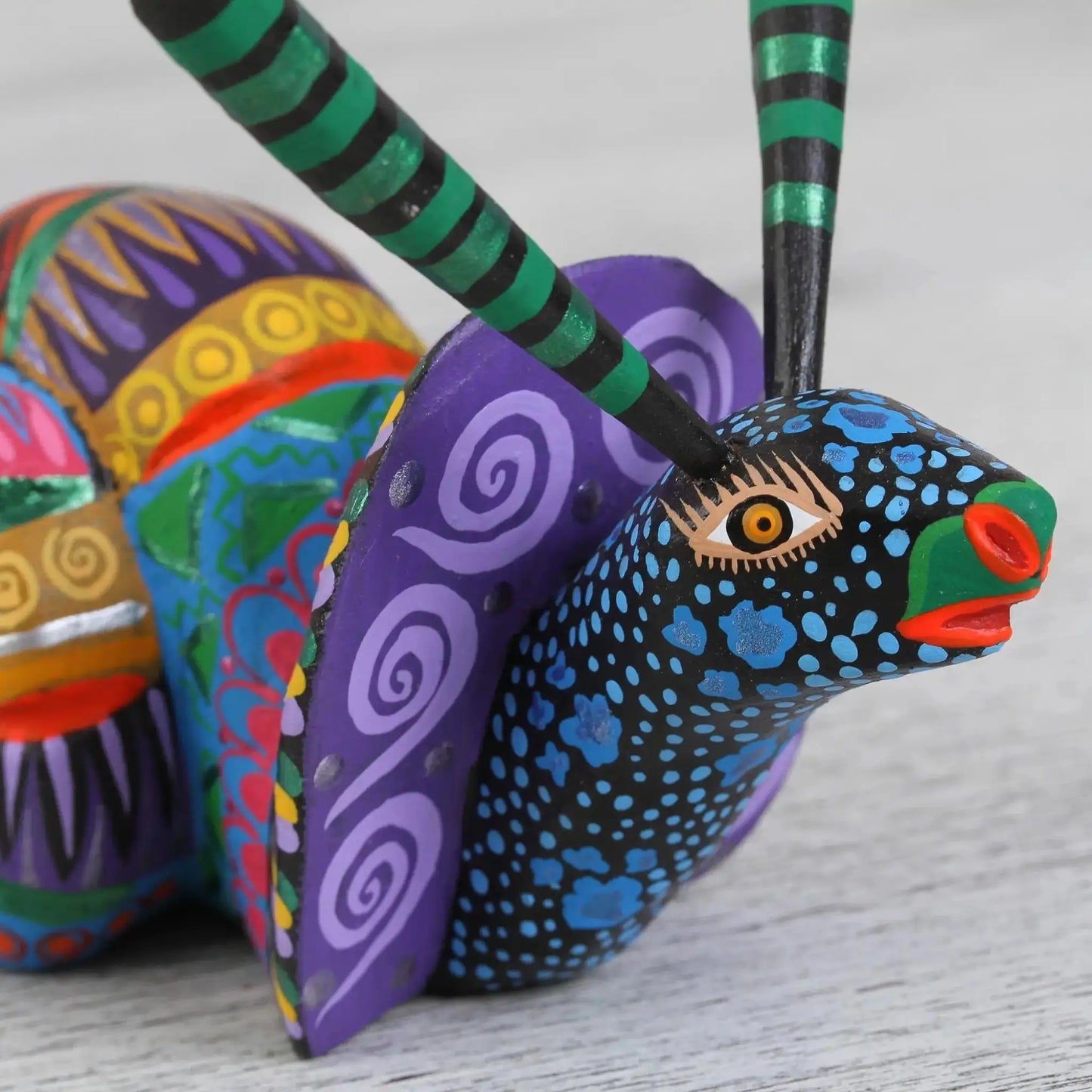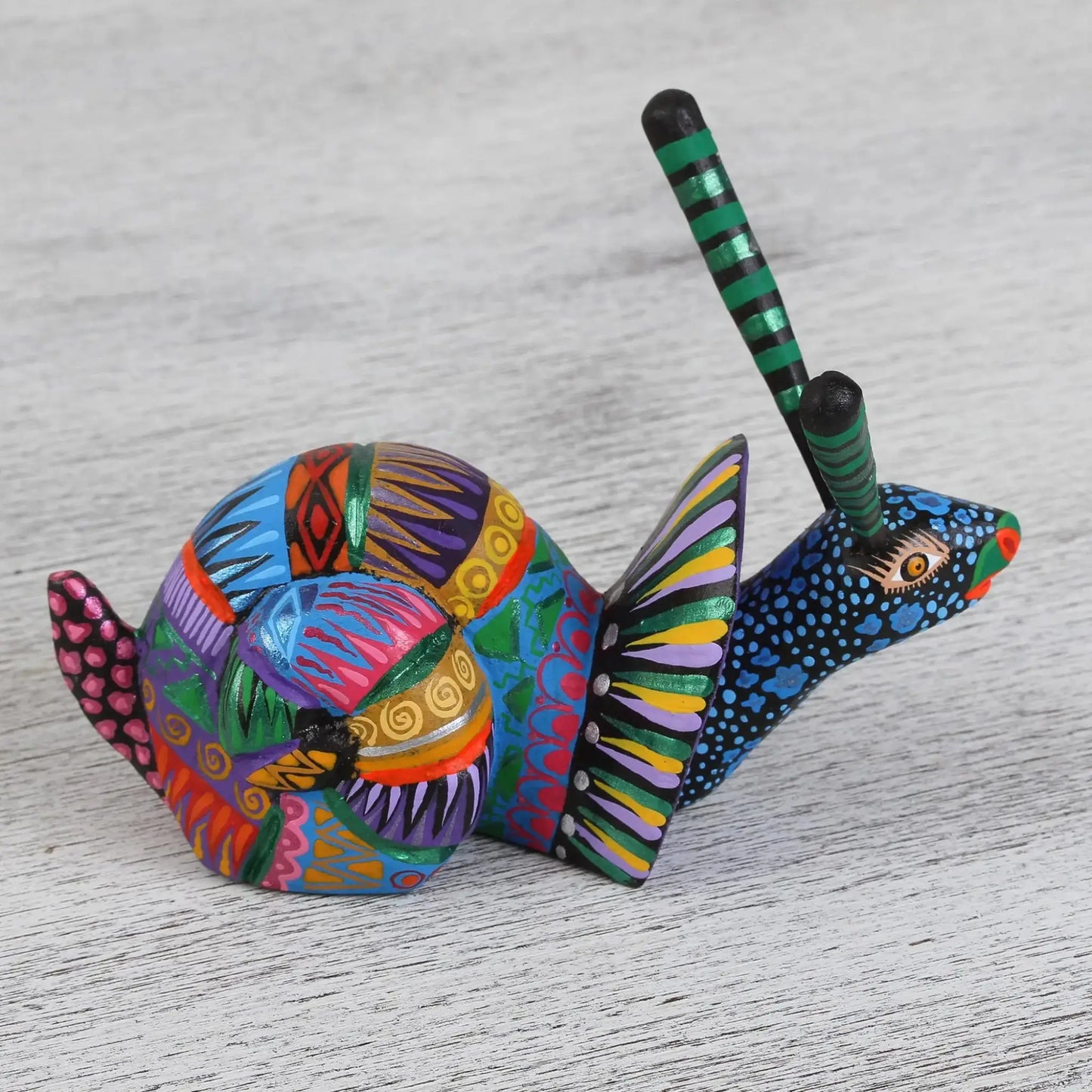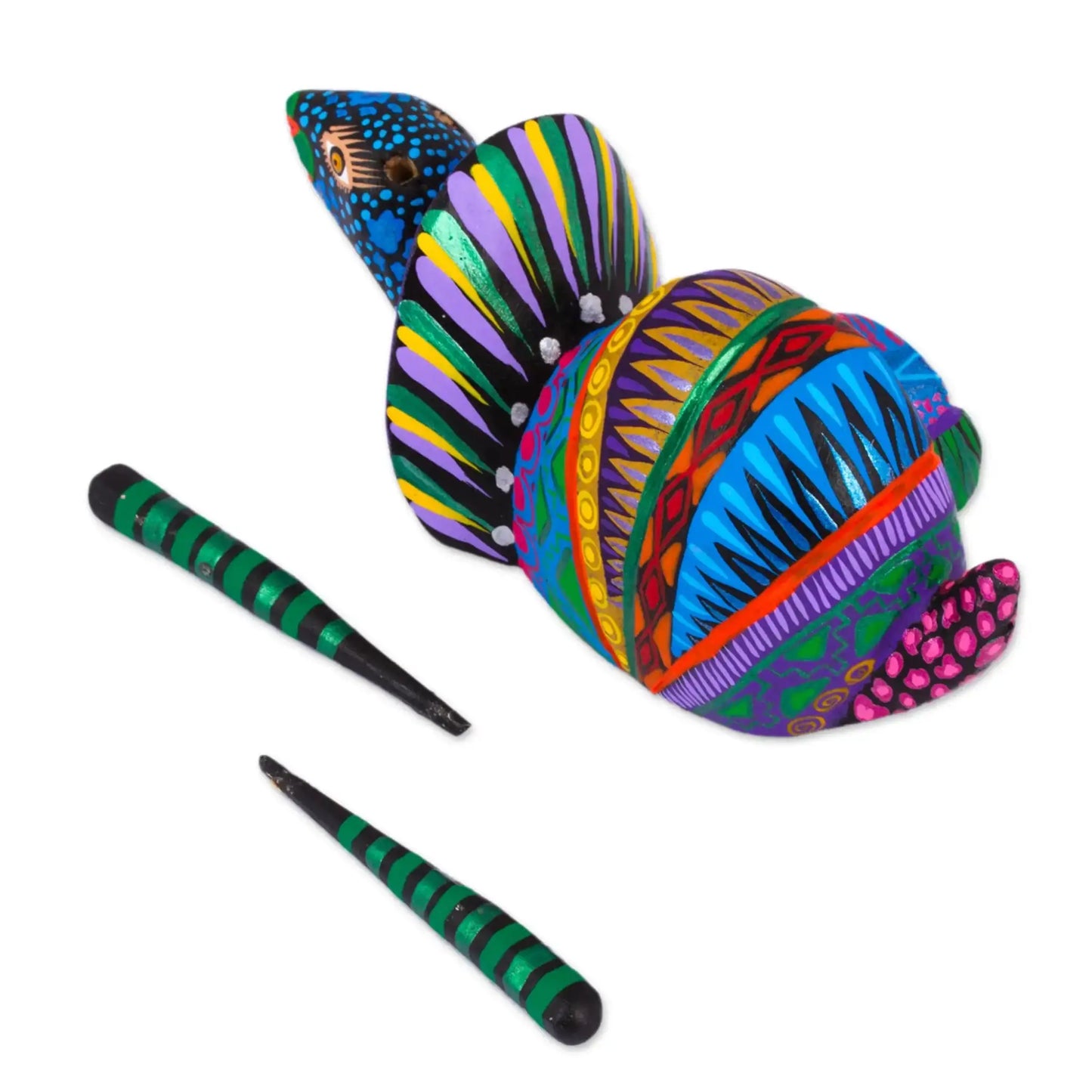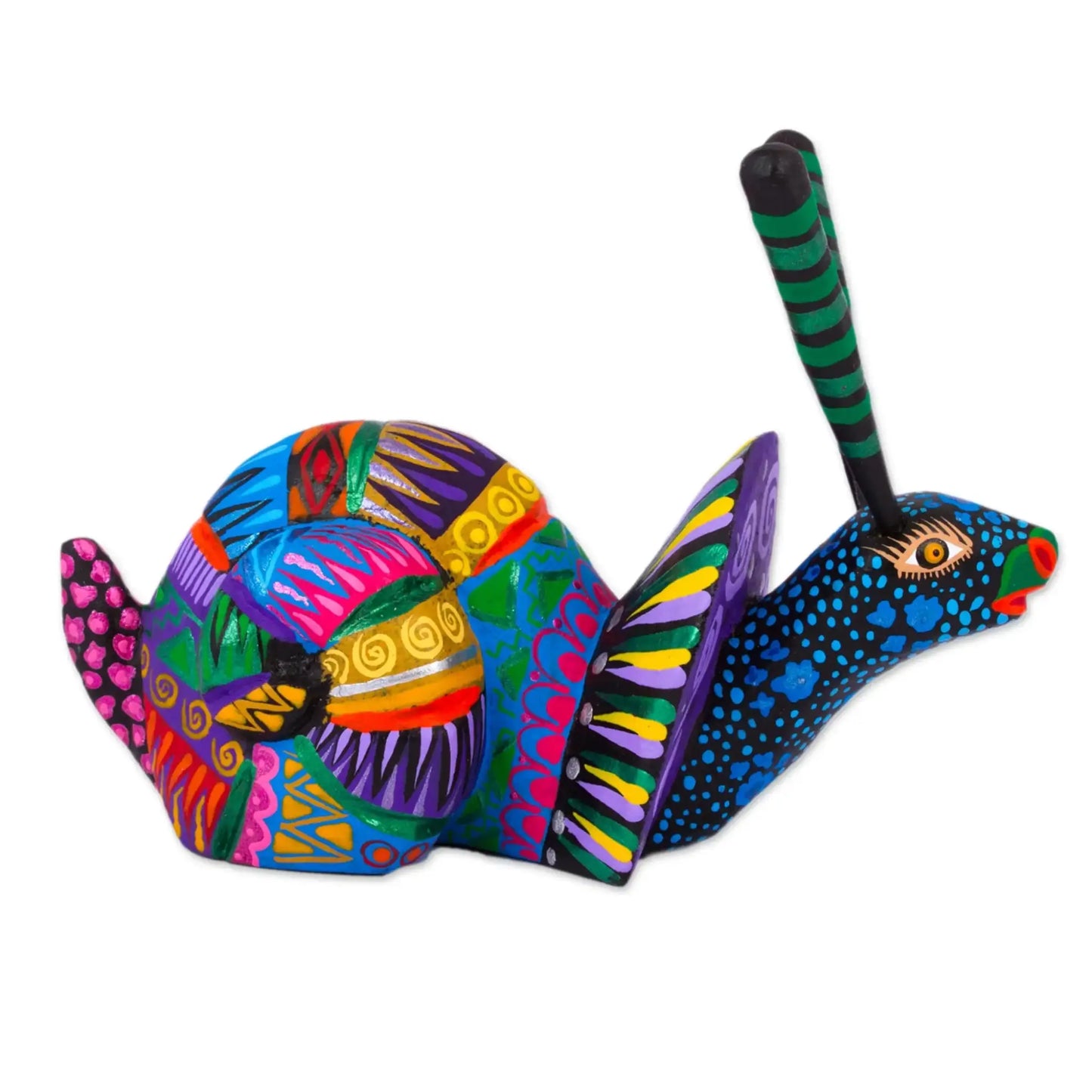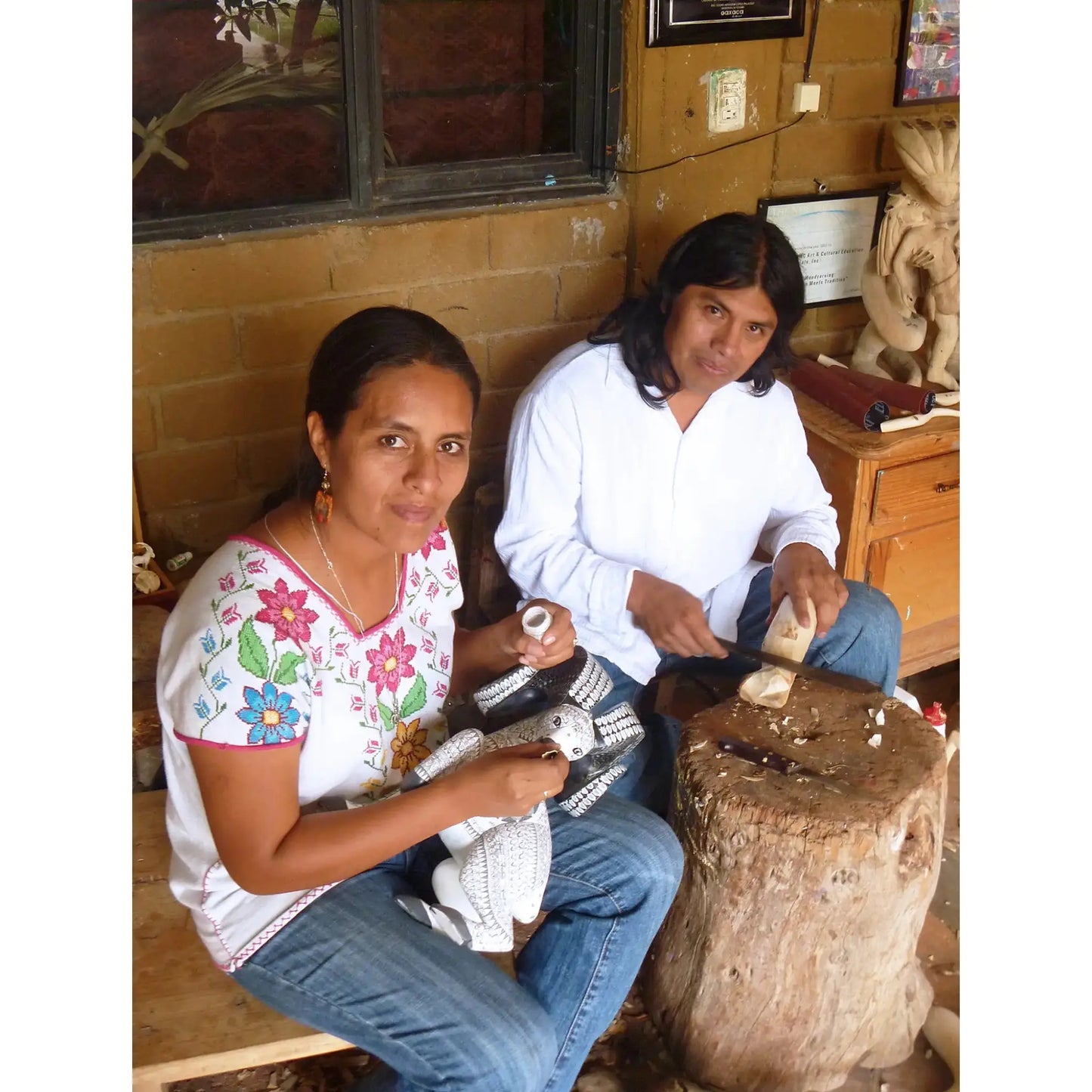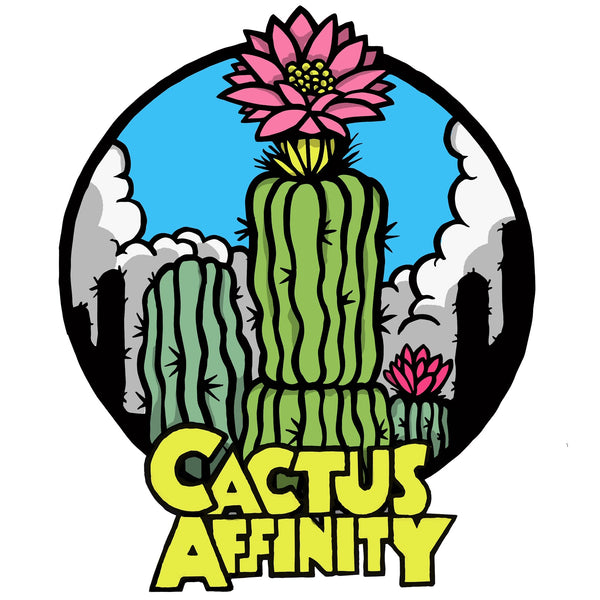Rainbow Snail - alebrije snail
Rainbow Snail - alebrije snail
"When she told us this we felt a great sense of satisfaction, we had no idea how much we could help someone – a child – through our art."
Husband and wife duo Zeny and Reyna from Oaxaca grew up with the tradition of carving alebrijes (fantastical figurines of real and imagined animals); both of their parents were master carvers in that region's traditional folk art. Here they create a wonderfully colorful snail in great detail. The snail is carved by hand from copal wood and painted in a wide array of meticulous patterns.
Small parts are separated for shipping to protect from breakage.
It is said that Oaxaca's alebrije tradition descends directly from Mexico City artisan Pedro Linares (1906-1992). When he was 30, he became seriously ill and fell into a sort of coma. While he was unconscious, he had a most fantastic dream. He was caught between the land of the living and the dead; the place looked like a forest and was populated with creatures with body parts belonging to different animals. The beings repeatedly uttered the word alebrije, and when Linares woke up, he recreated these figures in vivid colors using papier mache techniques and called them alebrijes . His work became famous and eventually influenced artisans in the state of Oaxaca who decided to craft alebrijes using traditional wood carving methods and according to that region's world vision.
- 0.3 lbs
- 3.9" H x 6" W x 3.5" D
- Copal wood
- Signed by the artist
- Hand-crafted item -- color, size and/or motif may vary slightly
- Warning: Choking Hazard. Small parts -- not for children under 3 years.
- Made in Mexico, ships from US
"Hola! We're Zeny Fuentes and Reyna Piña. We're from a small town in Oaxaca," says Zeny by way of introduction. "We both come from families dedicated to carving and painting wood in a style known as alebrije. Our parents were master carvers and they taught each of us when we were children. We studied different things too, but what we really like to do is crafting alebrijes and continuing our families' traditions.
"I still recall the first piece I ever carved. It was a duck and it got sent to the Museum of Light in San Antonio! Since then, I've had the good fortune to exhibit my work in different museums and galleries in the U.S. — the first one was in Arizona when I was only 14 years old. Now Reyna and I exhibit together, and some of our alebrijes are on display in Israel and in Germany.
"Our work has also been sponsored by a prestigious paper company that depicts our wood sculptures on their stationery.
"Reyna and I have different styles when it comes to alebrijes and, when we got married, we decided to combine our ideas, creating our own version — our artistic identity where color and sculpture have a specific meaning. You could say we conceived a life filled with colors and a love for nature as well as for our huge cultural heritage. And now we share our love for this art with our children, who will preserve their family legacy.
"What we have taken from our culture is that we left the trees and recovered our own life, which is evident in every finished sculpture.
"Our materials include reclaimed tree trunks and branches as well as roots from dead trees, or the ones that we find in fields and rivers. We use the dust that comes off after sanding a piece to fill in the cracks that a piece of wood may have, and we use the thorn of a maguey to paint the more delicate motifs. Each alebrije is crafted by hand.
"The government of Oaxaca and the Tourist Ministry have both recognized our work and named us master wood artisans and our efforts to promote this cultural art form across the borders. In 2012, we received an award during Mexico's National Exhibition of Artisan Crafts (ENART) for our sculpture 'The Wild Bull of the Sun and Day.'
"We love spending our free time in the nearby fields and rivers and admiring nature while sitting atop a mountain or hill. This is reflected in the work that we do, which is special and authentic. Our inspiration comes from life's essential elements — the sun, the moon, the wind, water and fire, as well as the main symbols of our Zapotec culture. They are related to animals, flowers, insects, the cycle of life, and time.
"An event that had a big effect on us was when we were invited to teach our work to children with different capabilities in a school in Michigan. Among them was a boy who wouldn't obey, wouldn't eat and wouldn't pay attention. Regardless, we began to teach and I started carving a log of wood into a bear, and this kid was amazed by the magic of transforming wood into an animal. I caught his attention and I helped him make a sponge from a block of floral foam.
"When he was finished, he looked quite content with himself. His mother later told us that, when he got home, he was in a very happy mood. He ate, and then drew a picture of me, calling me 'art boy.' Apparently, the experience contributed to him coming out of his depression.
"When she told us this, we felt a great sense of satisfaction. We had no idea how much we could help someone — a child — through our art.
"We would like to express our thanks to all of you who find interest in the wonderful world of Mexican alebrijes."
- Zeny and Reyna
Couldn't load pickup availability
Share
